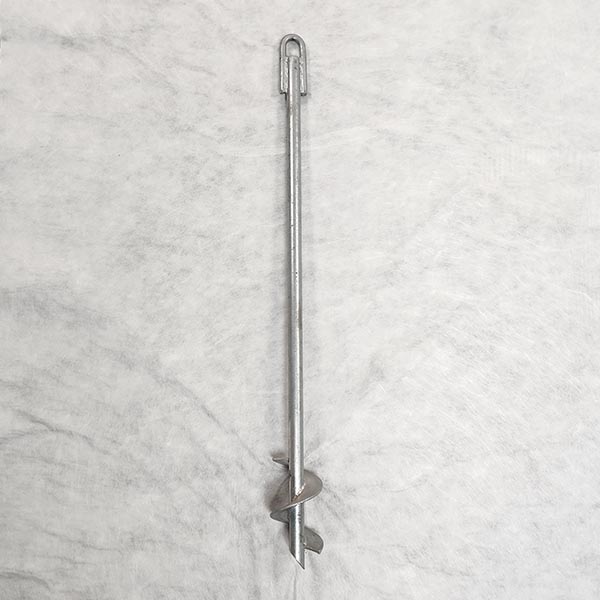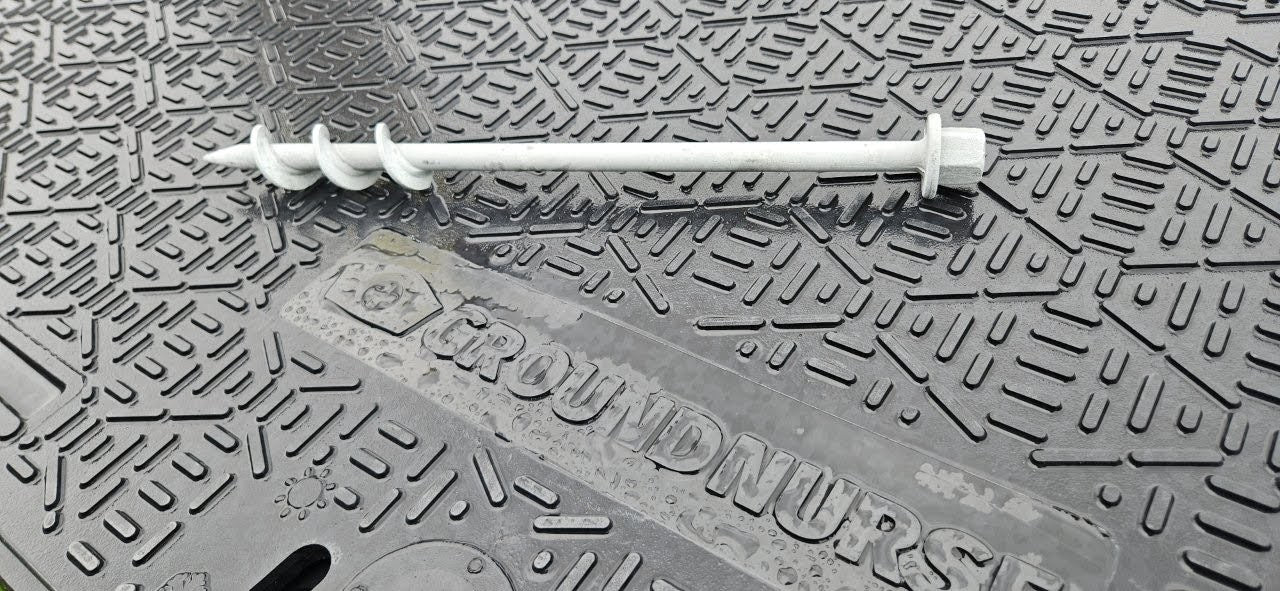How Heavy-Duty Earth Anchors Work: A Comprehensive Guide to Soil Anchoring Solutions
Heavy-duty Earth supports play an essential duty in supplying security and support in various construction applications. By installing deeply right into the ground, they withstand vertical and side forces successfully. Various types of anchors accommodate various dirt problems, making them versatile. Comprehending their auto mechanics and installation methods is vital for optimizing efficiency. What aspects influence their performance, and just how do they compare to traditional techniques? The responses might stun you.
Understanding Durable Earth Anchors
Heavy-duty Earth supports function as crucial parts in various building and construction and landscaping jobs, supplying stability and assistance in challenging soil problems. These anchors operate by being embedded into the ground, where they stand up to side and vertical forces. Their style enables protected add-on to frameworks, ensuring they stay secured versus dirt movement or outside loads.The performance of sturdy Earth supports mostly depends upon the kind of dirt and the anchor's setup depth. Appropriate setup techniques are vital, as they establish the support's holding ability. Environmental aspects, such as wetness and freeze-thaw cycles, can likewise affect performance.These supports are frequently made use of in applications ranging from securing fencings and maintaining wall surfaces to stabilizing temporary frameworks throughout unfavorable weather. Recognizing the concepts behind sturdy Earth supports is important for specialists looking for to improve the toughness and safety of their projects.
Types of Heavy-Duty Earth Anchors
Different types of sturdy Earth anchors are developed to meet details needs based upon dirt problems and project needs. Helical anchors, featuring screw-like blades, are efficient in softer dirts, supplying high lots capacities and very easy installment. Driven anchors, which are inculcated the ground, appropriate for rough terrains and offer immediate lots support. Tie-back supports are typically utilized in retaining wall surface applications, enabling lateral support by securing into the ground at an angle. An additional type is the cast-in-place anchor, ideal for concrete applications, as they are incorporated into structures for improved stability. Ultimately, dirt screw anchors are functional alternatives that can be utilized in various soil kinds, supplying reliable tension and compression capacities. Each kind offers distinct applications, making certain stability and safety in building and landscape design projects. Understanding these options permits informed decisions in picking the suitable Earth anchoring remedy.
The Mechanics of Soil Anchoring

Understanding the mechanics of soil anchoring calls for an evaluation of various sorts of Earth anchors and their setup strategies. Each support kind offers unique attributes that affect its performance in different dirt problems. Correct installation methods are necessary for taking full advantage of the anchoring system's stability and performance.
Sorts Of Earth Anchors
Earth anchors, vital elements in dirt anchoring systems, been available in numerous kinds, each developed for details applications and dirt problems. One of the most typical kinds consist of screw anchors, which are twisted into the ground, supplying solid side resistance. Helical supports include blades that enable effective setup in various soil types, making them suitable for both short-term and irreversible applications. Driven anchors, commonly made from steel, are inculcated the soil and work in rocky or dense environments. Auger anchors make use of a helical design to help with setup in softer dirts. Plate anchors are composed of a flat plate buried horizontally, dispersing lots over a bigger area, ideal for applications requiring high lots capacities in natural soils.
Setup Techniques Described
Appropriate installation methods are important for the effectiveness of soil anchoring systems. The procedure normally starts with site analysis, verifying the selected area can sustain the support's load. After figuring out the right anchor type, correct hole depth and angle must be developed. The installation includes driving the support into the ground making use of customized devices, such as hand-operated or hydraulic vehicle drivers, to attain best embedment. Post-installation, tensioning the anchor is vital to assure stability; this is usually verified with tons screening. Additionally, bordering dirt problems must be monitored to stop displacement. Complying with these techniques not only boosts the support's performance yet also extends its life-span, providing reputable assistance for various applications.
Applications of Heavy-Duty Earth Anchors
While durable Earth supports are often connected with construction and landscaping, their convenience extends to a range of applications across various sectors. In civil engineering, they supply essential support for keeping walls, making sure stability in areas susceptible to dirt disintegration. The aquatic industry uses these anchors for safeguarding anchors and marinas, avoiding movement triggered by currents and trends. In addition, in the telecom market, heavy-duty Earth supports are substantial for maintaining cell towers and various other tall structures against wind forces. Agricultural applications additionally benefit, as these supports can secure structures like greenhouses and livestock secure fencing, ensuring they withstand harsh climate condition. In sustainable power tasks, such as wind farms, Earth supports play an essential function in securing wind turbine structures, enhancing overall safety and performance. This wide variety of applications highlights the flexibility and dependability of durable Earth supports throughout numerous areas.
Benefits Over Standard Anchoring Methods
Standard anchoring approaches have actually long been relied upon for stability, sturdy Earth anchors offer significant advantages that improve performance and performance. One significant benefit is their superior load-bearing ability, which enables them to hold up against greater pressures without failure. This stamina makes them excellent for requiring applications, such as in building and utility installations.Additionally, heavy-duty Earth supports are created for much deeper installation, providing better security in various soil problems, consisting of loosened or sandy soils. Their resistance to deterioration and ecological aspects guarantees a much longer lifespan and decreased upkeep costs contrasted to traditional methods.Moreover, these anchors can be installed with marginal disturbance to the surrounding area, protecting the integrity of the landscape. On the whole, heavy-duty Earth supports provide a reliable and trusted option for securing requirements, going beyond the constraints often related to conventional anchoring techniques.
Setup Refine and Ideal Practices
The installment process for dirt securing services starts with thorough preparation and site assessment to guarantee peak performance. Following this, a detailed installment guide offers clear guidelines for efficient application (soil anchoring solutions). Adhering to these finest techniques is essential for accomplishing durable and trusted anchoring outcomes
Prep Work and Website Assessment
Reliable prep work and extensive website analysis are important actions in the installment of soil anchoring services. Before installment, the dirt type need to be examined to determine its bearing capacity and viability for securing. Carrying out a geotechnical study can provide essential details about dirt structure, wetness degrees, and prospective ground motion. Furthermore, determining existing frameworks, plant life, and energies is important to stay clear of interference during setup. The area must be removed of debris and challenges to ensure safe accessibility for devices. Weather should likewise be kept track of, as adverse conditions can affect both safety and installment effectiveness. By meticulously preparing the website Related Site and assessing all appropriate variables, the possibility of successful anchor performance is considerably boosted.
Step-by-Step Installment Guide
A comprehensive installment procedure is essential for achieving optimal efficiency of soil anchoring remedies. The setup begins with picking the appropriate support kind and guaranteeing the site is clear of debris. Next off, appropriate opening placement is figured out based upon load needs. As soon as the location is developed, openings are drilled to the specified depth and diameter making use of the correct devices. The anchor is after that inserted into the hole, making certain it is straightened properly. After securing the anchor, dirt is backfilled and compressed to enhance stability. It is important to follow supplier standards throughout the process. A post-installation inspection validates that the anchors are adequately positioned and functioning as planned, offering dependable assistance for the intended application.

Maintenance and Evaluation of Earth Anchors
Routine upkeep and examination of Earth supports are important for making sure long-term performance and stability. Periodic checks enable the early discovery of issues such as deterioration, loosening up, or dirt activity. Inspectors should look for indicators of corrosion or deterioration on the anchor elements, specifically at the link points. Additionally, the check my source surrounding soil should be examined for erosion or changes in moisture web content, which can affect anchor effectiveness.It is advisable to establish a regular assessment routine, ideally a minimum of annually, depending on ecological conditions. During examinations, all visible parts need to be cleansed to get rid of dirt or particles that can conceal possible problems. Any indications of distress, such as turning structures or uncommon settling, ought to trigger instant examination. Correct documents of evaluations can aid in tracking support efficiency gradually and facilitate prompt maintenance actions, guaranteeing the supports continue to be trusted and useful.
Regularly Asked Questions
What Materials Are Heavy-Duty Earth Anchors Usually Made From?
Sturdy Earth supports are commonly constructed from resilient materials such as galvanized steel or stainless-steel, guaranteeing strength and resistance to corrosion. These products give long-lasting support and stability in various dirt conditions and applications.
How Do Dirt Problems Influence Anchor Efficiency?
Dirt problems greatly influence support efficiency. Elements such as dirt type, wetness web content, and compaction influence the support's grip and security, with natural dirts commonly providing much better resistance than loosened or sandy dirts, impacting overall performance.
Can Heavy-Duty Earth Anchors Be Reused After Removal?
Durable Earth supports can be recycled after removal, given they are checked for damage and wear. Correct cleansing and maintenance boost their long life, guaranteeing effective efficiency in subsequent installments when problems permit risk-free reinstallation.
What Are the Ecological Impacts of Using Earth Anchors?
The ecological effects of making use of Earth anchors include prospective dirt disruption, disturbance of regional environments, and possible contamination of groundwater. Nonetheless, if made use of sensibly, their benefits commonly outweigh these problems, advertising stability in various applications.
Just how Do I Select the Right Anchor for My Job?

Comments on “How to Anchor in Extreme Soil with construction site anchors”